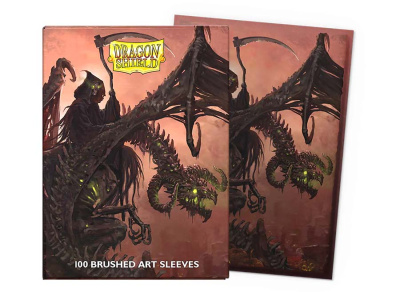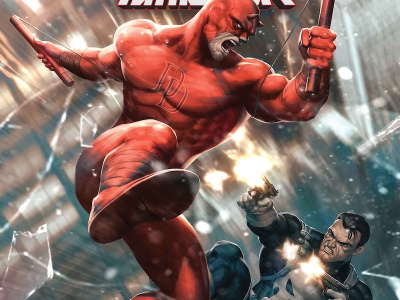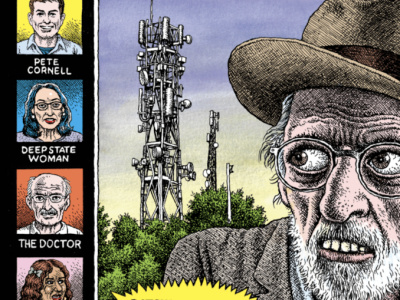
Roy Thomas, who wrote the first Conan comics ever for Marvel Comics in the 70s, is writing a new Conan series for Dark Horse which will premiere this fall: Conan: Road of Kings. The launch of this new title marks the 40th anniversary of Conan comics, which began in the fall of 1970 with Conan the Barbarian #1 from Marvel. In Part 1 of this two part interview, Thomas talks about the history of the Conan comics and property. In Part 2, Thomas talked about the new story he’s writing for Dark Horse for Road of Kings.
Tell us a little bit about your history with this property.
I wasn’t a reader of that type of fiction particularly. I had read Edgar Rice Burroughs, his Martian novels, as a kid. And I started collecting the Lancer Conan paperbacks when they started coming out about 1966 or so, mostly because I liked the Frank Frazetta covers. He’d been doing a lot of Edgar Rice Burroughs and related fantasy covers and I liked the Conan covers but I didn’t get into the one story I tried to read, Conan the Adventurer, so I never really tried again for a couple of years.
Marvel’s readers kept writing us letters saying we should pick up the rights to a few of these things that were coming out in the bookstores as well as doing superheroes. One thing they suggested a lot was a sword and sorcery title, and especially Robert E. Howard and Conan were being mentioned. I was somewhat familiar with them and Stan really wasn’t. He asked me if it was a good idea and we discussed the general concept of what sword and sorcery was. Stan didn’t really have any idea. He asked me to write the publisher Martin Goodman a memo, a couple of pages or so, saying why we should license the rights to a sword and sorcery character. So I did.
I must have been fairly convincing because Martin Goodman said it sounded like a good idea to him. I know I told him in the memo that after all we have a brawny powerful hero, we have a lot of beautiful women, perhaps clothed for a warm climate, we have a lot of sorcerers who were almost like super villains, plus a lot of monsters. That sounded pretty good. I didn’t stress the fact that it would also look like it was in an ancient or medieval world, so he OKed me to go after the rights to a sword and sorcery character, although Conan was not the one I actually went after. I didn’t think it would be within our little price range, the little amount of money that I was authorized to offer.
Although the original deal didn’t quite work out I ended up contacting Glenn Lord as the literary agent for the Robert E. Howard estate. His name was mentioned in the introduction to one of the Conan volumes that came out, about the time I was getting frustrated by the other deal. So I contacted him and said, ‘We don’t have much money to offer but this might increase Conan’s market a little bit by introducing him to a lot of readers who wouldn’t ordinarily read the paperbacks and that made sense to Glenn so we began a partnership of sorts that was good for Conan, good for me, and good for Marvel.
What was your role at Marvel then?
Associate editor would have been the actual title, I suppose.
What was the commercial history of the title? How did it do for Marvel?
It did very well with the first issue. It sold quite well, a small print run, but still the percentages were good.
What was a small print run in 1970?
It would have been at least a couple hundred thousand or more. 200, 250,000, something like that. It had to be at least a couple hundred thousand or thereabouts. Initial sales figures were somewhere at least well up in the fifties. That was considered a fairly good figure in those days before the direct market.
By fifties, you mean 50% [sell-through]?
Yes. Something like 50%. I seem to recall it being back in the middle, fifty, fifty-seven, something like that. Anyway it was a reasonably good percentage.
For a combination of reasons every one of the next seven issues sold less well than the one before. That’s well over a year history for a bi-monthly title. It seemed to be going nowhere fast. Every issue would come in with a slightly lower sales figure. We were trying to figure out what to do about things and then Stan decided to take a look at the covers. “You’ve got too many animals on the covers,” he said. I liked these covers. There was a giant bat, a giant spider from “Tower of the Elephant,” the man-headed serpent and things of this sort, a woman changing into a tiger. So Stan said, “Get some more humanoid menacing-looking villains instead of these animals.”
As it happened the story we were doing had two different menaces in it. One was a giant gila monster based on a synopsis by Robert E. Howard and the other was a number of giant, seven or eight foot, skeletal warriors in armor. We had the skeletal warriors on the cover and that issue, #8, picked up in sales and the next issue, which had a kind of menacing winged man on it fighting Conan, that picked up a little more from there and after that it was never in any kind of danger of being cancelled for the next fifteen, twenty years.
How long did you write it?
I wrote almost exactly the first ten years. I left with the 10th anniversary issue, which was #115. While I still had a little time to go on working for the company I thought it was kind of nice thing to end on the 10th anniversary issue. I wrote the other title, the black and white title I started, Savage Sword of Conan, for a few months longer. I wrote the first ten issues.
It was a total of just under 200 comics counting a few specials and annuals and the King Conan title that we started right before I left. It was a fair number of stories to write about a character. Nowadays when somebody writes ten or twenty comics in a row they think ‘wow, he’s got a real run going.’ In those days if we liked a series we’d stick around on it for a long time. I did the thing for ten years and only left it when I left Marvel entirely.
What was happening with the property? The first movie was 1982. Was the property getting more popular or was it confined just to Marvel?
By the middle seventies Conan had become one of Marvel’s most popular characters. Since the Savage Sword of Conan book sold for like a buck at a time when other comics were like a quarter or thirty cents or so (and didn’t have that much color in it, just the cover, it was not that expensive to produce), I suspect there was probably a little while in the late seventies at least, when Conan between the two or three titles he was in was probably making as much money in terms of comic book sales for the company as Spider-Man was.
The Franklin Mint did some medallions at that time, three or four of them and one of the four they picked was Conan out of all the characters they could have picked. We had the rights to merchandising at that time. So it was really quite popular.
But in the meantime, by the mid-seventies, unfortunately Lancer (I don’t know exactly how they mismanaged it) somehow despite the popularity of the Conan and Robert E. Howard properties they had, and the other things they did, managed to go into Chapter 11 bankruptcy, which meant that for a number of years in the late seventies and early eighties there were a number of years when there was no authorized printing of the Conan text stories at all. He wasn’t exactly a growth industry in terms of paperbacks or hardbound books or anything like that. He was surviving in the public’s mind for those years primarily on the strength of the comics.
I always remember that at an early stage, sometime in the late seventies or early eighties, but sometime before the movie, that Sammy Davis Jr. was hosting a show, I don’t know if it was his or he was guest-hosting The Tonight Show, and he had Arnold Schwarzenegger on. This was sometime before the movie was released or even filmed yet, but he’d been signed long since to play the character and he said he was willing to play Conan the Barbarian. And Sammy Davis Jr., a favorite singer of mine, said, “Oh, the comic book character!” That’s sort of the way the public thought of Conan if they thought of him at all at that time--as a comic book character.
It made that movie viable at a time when otherwise probably it would have been dead. Eventually it would have come back and maybe somebody would have done it, but that particular movie at that particular time owed as much to comics as it did to the stories in terms of viability.
You were around and involved in the popularization of this character at levels it had never hit before. Now the Dark Horse stuff has sort of laid the groundwork and there’s an effort to turn this into a mass property again with the movie. Do you think the time is right for a sword and sorcery character like Conan?
Yes, I think so. After all, you’ve got a lot of larger than life characters that have come about in the last few years. When Conan was first out as a film, it was the beginning of the age of the superhero movie or something close to it. There were a couple of Superman movies and the Star Wars movies the years before that and that was about it. But now between the combination of all the other high-level fantasy movies plus the growth of what you can do in terms of special effects so much over what they were able to do in those two films for the budget, I think the time is riper now than it was in the 80s for a really popular Conan movie. I’d sure like to see it.







